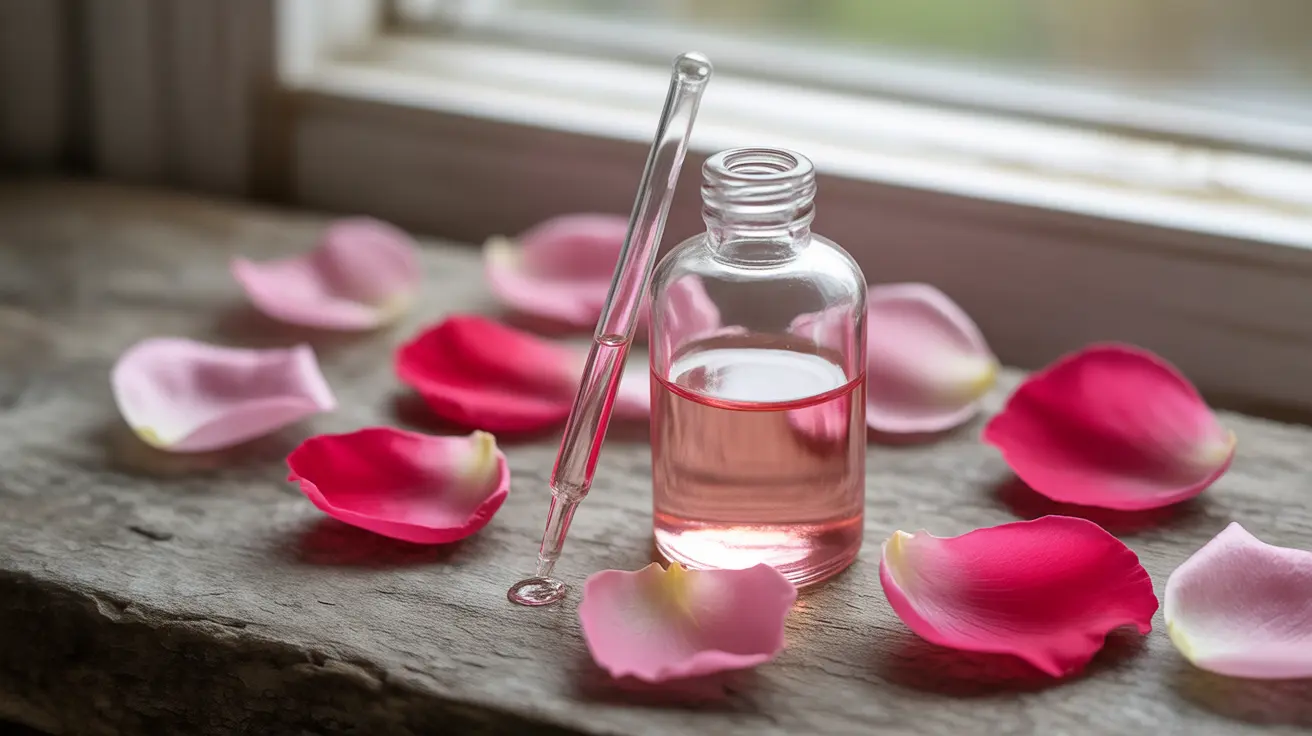Rose oil, derived from the delicate petals of roses through careful distillation, stands as one of nature's most precious botanical extracts. This aromatic essence has been treasured for centuries, offering a remarkable range of benefits for both physical and emotional well-being. Understanding how to properly use rose oil can unlock its full potential for skin health, emotional balance, and natural healing.
In this comprehensive guide, we'll explore the diverse applications of rose oil, from its skin-nourishing properties to its powerful aromatherapeutic effects. We'll also discuss proper usage methods and important distinctions between different types of rose-derived oils.
The Science Behind Rose Oil's Healing Properties
Rose oil contains a complex mixture of beneficial compounds, including citronellol, geraniol, and eugenol. These natural components contribute to its anti-inflammatory, antimicrobial, and antioxidant properties. The oil's molecular structure allows it to penetrate the skin effectively while providing a protective barrier against environmental stressors.
Skin Benefits and Topical Applications
When properly applied to the skin, rose oil offers numerous benefits that can enhance your skincare routine:
- Deep hydration and moisture retention
- Reduction in the appearance of fine lines
- Soothing properties for sensitive or irritated skin
- Natural antibacterial protection
- Enhanced skin barrier function
For optimal results, always dilute rose oil with a carrier oil before applying it to your skin. This ensures safe application while maintaining its therapeutic benefits.
Aromatherapy and Emotional Wellness
The aromatherapeutic properties of rose oil make it particularly valuable for emotional and mental well-being:
- Stress and anxiety reduction
- Mood enhancement
- Improved sleep quality
- Enhanced emotional balance
- Natural support for meditation practices
Hormonal Balance and Women's Health
Rose oil has traditionally been used to support women's health issues, particularly during menstruation and times of hormonal fluctuation. Its natural properties can help:
- Ease menstrual discomfort
- Balance hormone-related mood changes
- Reduce inflammation
- Promote relaxation during times of stress
Safe Usage Guidelines
To ensure safe and effective use of rose oil:
- Always perform a patch test before full application
- Use appropriate dilution ratios (typically 2-3 drops per tablespoon of carrier oil)
- Store in a cool, dark place to maintain potency
- Choose high-quality, pure rose oil from reputable sources
Frequently Asked Questions
What are the main benefits of using rose oil for skin health and hydration?
Rose oil excels in skin health by providing deep hydration, reducing inflammation, and supporting the skin's natural barrier function. It helps maintain moisture levels while offering antioxidant protection against environmental damage. The oil's natural compounds can also help reduce the appearance of scars and promote even skin tone.
How can rose oil help reduce anxiety and improve mood when used in aromatherapy?
Through aromatherapy, rose oil interacts with the limbic system, influencing emotional responses and mood regulation. Its calming scent can lower stress levels, reduce anxiety, and promote feelings of well-being. Regular use in aromatherapy practices can help establish better emotional balance.
Is it safe to apply rose oil directly on the skin, and how should it be used topically?
Rose oil should never be applied directly to the skin without dilution. Always mix it with a carrier oil such as jojoba or almond oil at a ratio of 2-3 drops per tablespoon. This ensures safe application while maintaining therapeutic benefits. Always perform a patch test first.
What are the differences between rose oil and rosehip oil, and how do their uses vary?
Rose oil is distilled from rose petals and is primarily used for aromatherapy and skincare, while rosehip oil is pressed from rose hips (the fruit of the rose) and is rich in vitamins A and C. Rosehip oil is typically used for skin regeneration and anti-aging, while rose oil excels in emotional wellness and aromatic applications.
Can rose oil help relieve menstrual pain and support hormone balance naturally?
Rose oil can help alleviate menstrual discomfort through its anti-inflammatory properties and ability to promote relaxation. When used in massage or aromatherapy, it may help reduce cramping and support emotional balance during hormonal fluctuations. However, it should be used as part of a comprehensive approach to menstrual health.




